Say hello to the newest Scroop Pattern: the Fantail Skirt, a gorgeous skirt with a flirty fan of back pleats inspired by New Zealand’s beloved fantail, or pÄ«wakawaka, and late Victorian and Edwardian skirts styles.
The Fantail is a particularly exciting pattern for me: not only is it the first historical Scroop Pattern, it’s also a two-parter, with a full-length historical version, accurate to 1890-1910, and a just-below-the knee modern version (and I love them both!).
The Historical version is based on my personal 5-gored late-Victorian/Edwardian skirt pattern, with a fan of back pleats that always make people say “Oooh!” and “How do you do that!” When I launched Scroop Patterns I knew it was one of the patterns I wanted to make available, but I wanted to be sure you got the most accurate version possible.
So I’ve been collection skirt patterns from 1890-1910, and studying every skirt from that period that I can access. I’ve combined all of these into one pattern with all the best features. It’s the perfect basis for so many fashions from the last decade of the 19th century, and the first decade of the 20th, and the perfect basis for so many pattern hacks, from petticoats to big swooshy Edwardian skirts – and of course I’ll be showing you some of them!
The Historical pattern was specifically designed to be an easy starting point for the novice historical sewist, with the same detailed instructions you’d expect from any Scroop Pattern, and additional historical information to help you create a period-accurate skirt of your own.
As I worked on the Historical pattern, I kept coming back to the original idea behind Scroop Patterns: using history to create modern fashions. I began playing with the Historical pattern, to see if I couldn’t come up with a modern version. I did, and I’m very pleased with the result, as were my testers. I hope you will be too!
The Modern Fantail features sewn down pleats, rather than loose pleats, and modern construction techniques, with addition of a few more interesting and polished finishing techniques than you find in most modern sewing.
I had a really fantastic group of test subjects for the Fantail, including a novice sewist for whom the Modern Fantail was their first attempt at an invisible zip, and a historical newbie who had never attempted a placket opening before the Historical Fantail. They both succeeded and made beautiful versions based off the instructions – which are now even better thanks to the input of all the testers!
You can buy both the Historical and the Modern pattern as a combined package, or, to make it really easy (and affordable) if your sewing is purely modern, or purely historical, just one or the other.

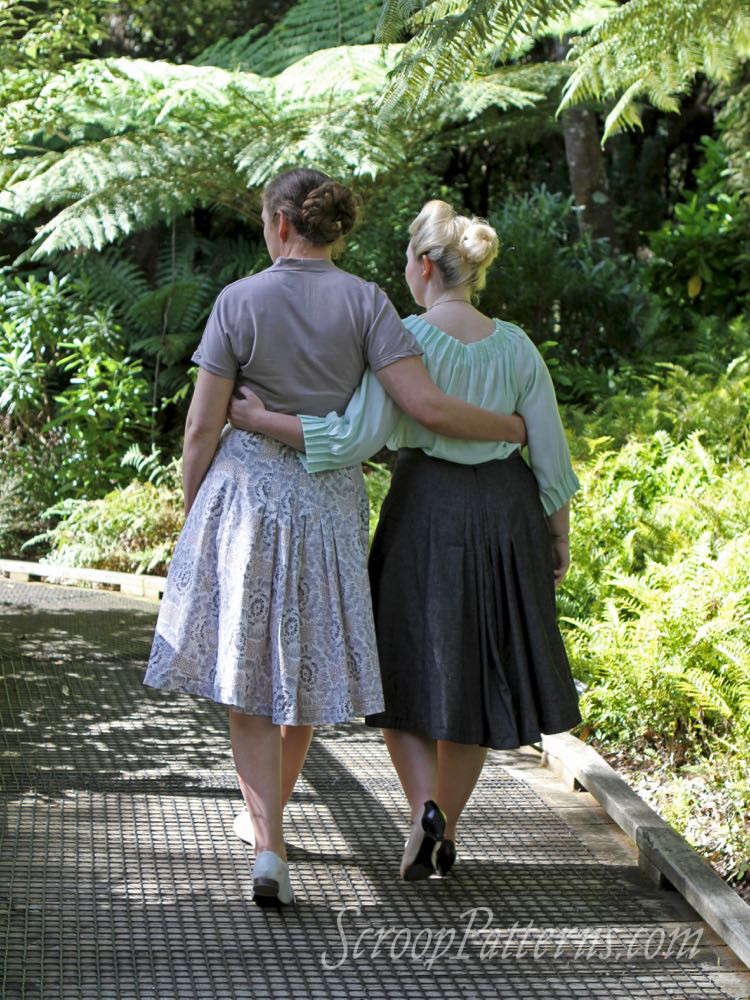
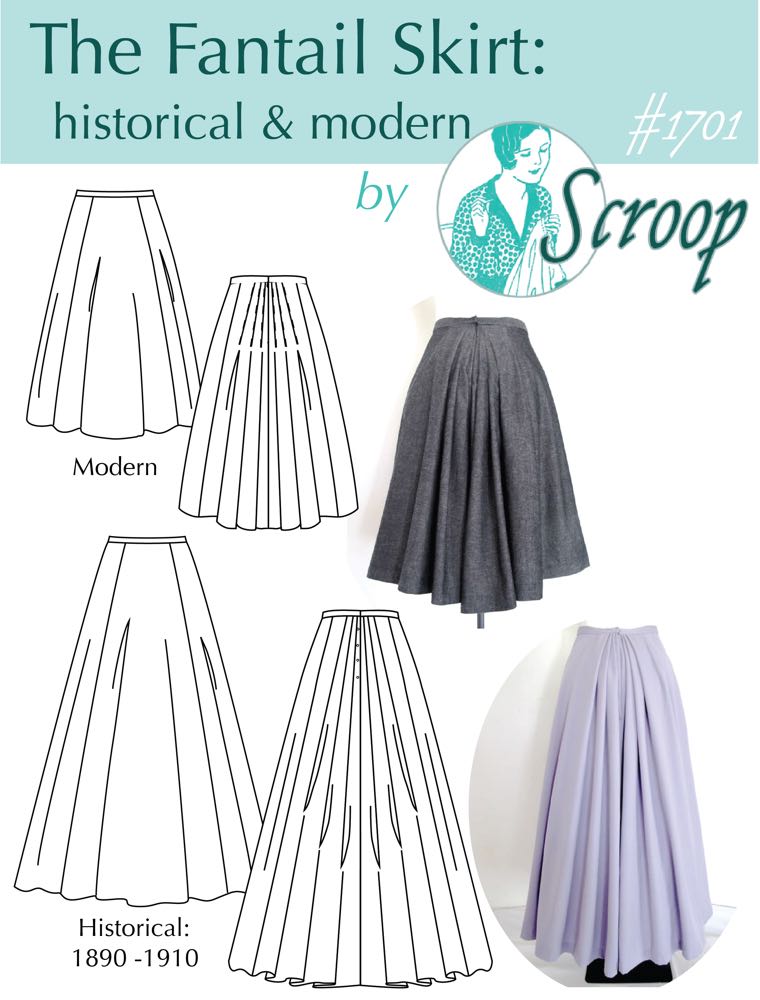
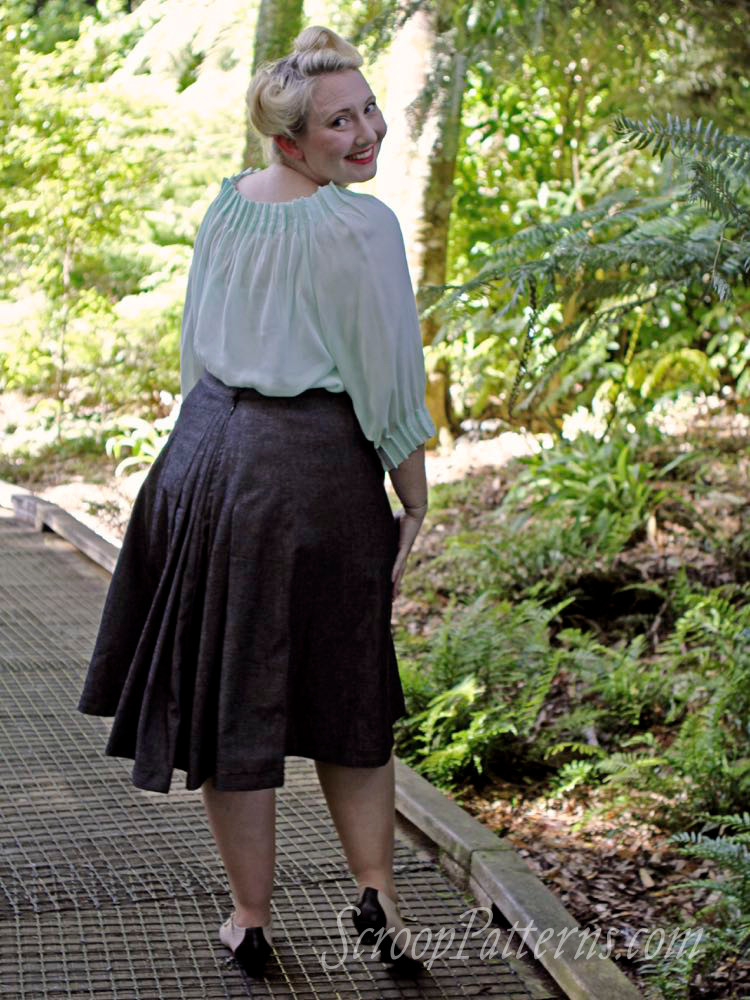
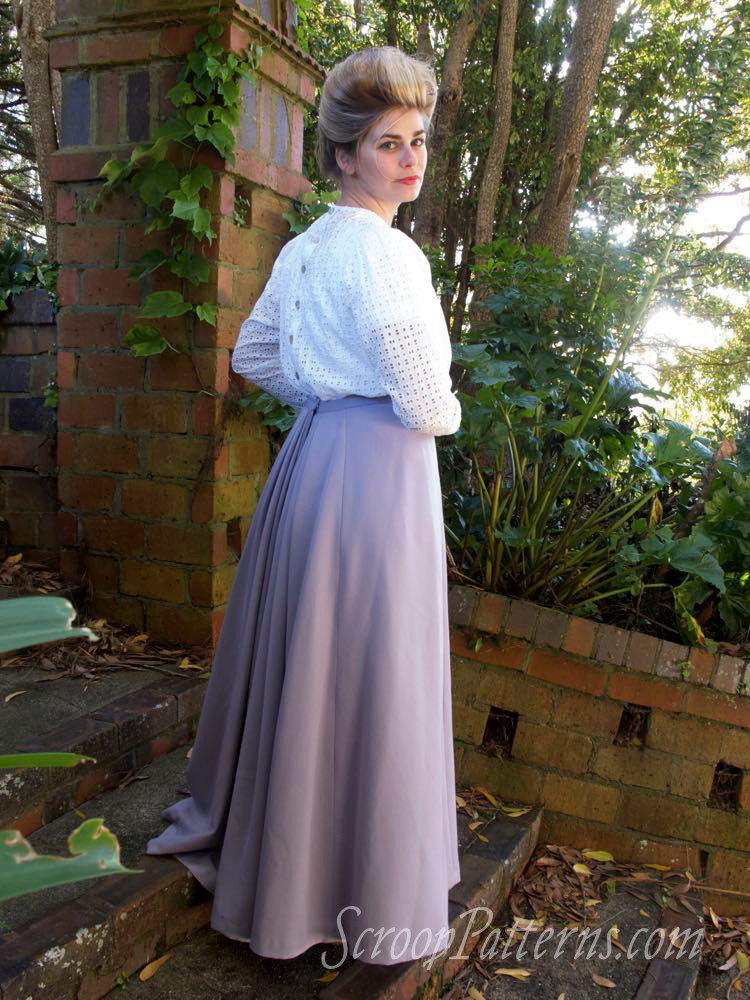
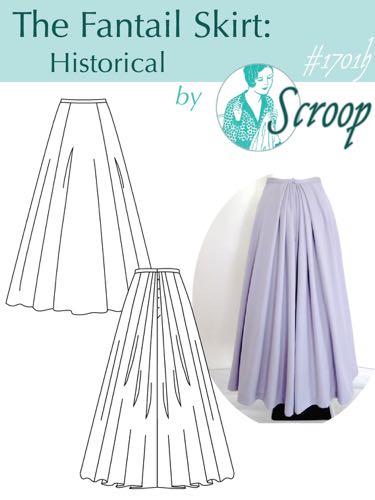
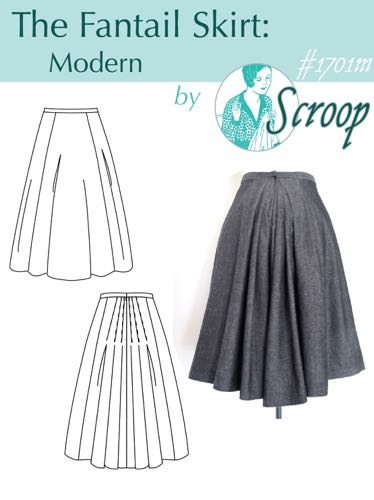
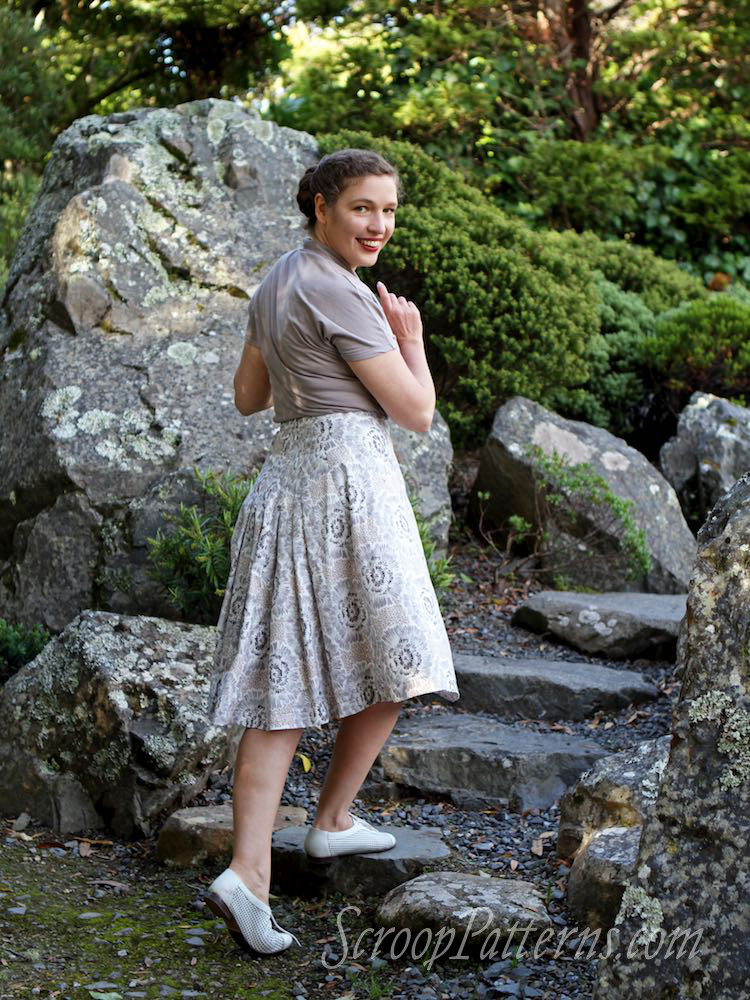
Yay! Well done. No lie, the historical version almost looks like something a Tombstone reenactor would wear. Looks great.
Thank you! I’m hoping lots of different reenactors will use this pattern!
Arizona does a lot of cool reenacting. The “Wild West” myth that the Conservative Republicans espouse was nothing like reality. There was in fact a lot of travel, a lot of interracial marriage, a lot of communal societies–and an astonishing amount of gun control safety!
Funny how sometimes you do historical costuming, but then you still address current political statements.
Looking forward to your Oscars post! It is already looking like the clothing will be part of a bigger dialogue. Clothing is a part of speech, I believe, along with having artistic merit in itself.
Thank you! That is the prettiest skirt I’ve seen in ages. I love both versions.
Thank you! I’m so glad you like them both!
I think this is just great! To have a modern and historical skirt from essentially the same pattern. The options are endless! I know I am going to have to make one!
Sarah
Yay! I’m really excited that people like the idea of a historical and modern pattern together. It’s something I play with a lot in my sewing, but I wasn’t sure how everyone else would like it!
I love it; I play with it myself. My purchase will have to wait, but I think I’m definitely getting this one – it hits lots of my personal style points. 🙂
I intend to purchase this, I am not a dress – skirt person but this is just lovely. Well done!
Awesome! Thank you!
That’s a gorgeous pattern!
Thank you <3
It’s such a pretty swishy skirt
Hurrah! They’re so pretty! This is the perfect combination of historical and modern, and I love that the pÄ«wakawaka was part of your inspiration.
Thank you! I absolutely love pÄ«wakawaka – they were the first NZ bird that I learned the Maori name for. I thought about naming the pattern pÄ«wakawaka, but eventually had to decide against it just for reasons of practicality.
Well done! All the versions look amazing.
It’s very cool how the pattern works both as a modern garment and as a historical one. So versatile – you could use it to make just about anything.
Thank you! For years people have asked if I wore my historical stuff everyday, or if I could make everyday versions of them, so that was really the genesis for this idea.
Ahhh I love it! It’s everything I love about the bustle years – business in the front, party in the back 😀
Hehe. Great description.
Cute! What a lovely modern take on a historical style. 🙂
Best,
Quinn
Beautiful! I can see myself flittering about like a wee fantail in the bush in one of these! Maybe not as graceful as the real thing….
Thank you! Alas, I don’t think any of us is going to manage to be as graceful as a real fantail. 😉
YAY! WOW! & Congratulations!
I’ve been wanting to make a floor length, edwardian inspired skirt for years, but have been intimidated by the fact that all historical patterns I could find are intended for corseted bodies. So this is perfect, thank you!
I love this! It is beautiful and brilliant! I can’t wait to see the hacks. 🙂
I have been looking for a versitle pattern for stage costumes, something that I could tweak for several different decades and looks. I think that this may be just the thing. Thank you so much! Drafting patterns is a bit beyond me, You have done all of the hard work!
The back is absolutely amazing and I love the flare! Do you have any pictures of the front? I would love to see the front view as well!
Thank you! If you click through any of the images, or any of the linked texts, it will take you through to the product listings, where there are images of the front view. 🙂
At first I thought you were showing off your fabulous up-do’s, but as I scrolled down I realised it was the skirt! A good start to your historical patterns; thanks.
Both versions look lovely, and like everyone here, I think the idea of designing an historical and a modern version of the same garment is splendid. Forgive my novice sewer’s question, however: is there any reason why one should not hem the historical version shorter, if one wanted a short skirt with the loose pleats? Or, conversely, any reason why not to leave the modern version’s pleats loose intead of sewing them down? Many thanks!
Thanks! You can definitely hem the historical version shorter, or leave the modern’s pleats un-sewn.
Thank you!
Oh! It just occurred to me that the historical Fantail is the perfect special thing to make from the lovely crimson linen I bought in Salzburg years ago hoping I would start making clothes one day (it only took ten years…). Is there a chance you might post an article about the historically appropriate technique of piecing, which you mention would have been used at the bottom of gores to save fabric? (I think I only have 3m of the linen!)
One other question – the pattern description says that it is suitable for lightweight fabrics. Is that because heavier fabrics don’t work? (and why? to heavy for the waistband? draping badly?) or would a medium to heavy but soft fabric work too?
Many thanks!
Awesome! Pretty much any form of piecing you could think of is historically accurate. Really heavy fabrics get too bulky in the waistband for the Fantail due to the pleating – though you can get away with heavier fabrics if you are wearing it over a corset than if you aren’t. I’ve never seen a linen that would be too heavy for the Fantail so I think you’re good there.
Lovely! Thank you! I guess I was wondering if you would do a post about the historical techniques for saving fabric generally, in fact – speaking as someone who is new to sewing and has no-one to learn from, such an article would be very useful. (Or perhaps you’ve done one already and I missed it in my archive trawling? if so, excuse me!) I haven’t a notion how to do gore piecing, frankly. I daresay I could come up with something, but even an image of an historical example and a few comments would be helpful. Just a notion! Many thanks as always! Hopping over to the Scroop store now…
Oh dear…I have another question. About petticoats this time. How does the Fantail pattern need to be altered (if at all?) in order to make the result a suitable petticoat to go under the actual Fantail skirt? Sorry to bombard you with questions in busy times! No rush, eh? And many thanks!
I’ll be doing a full post on that, but it may take a while, so here is the quick run-down.
I make the whole thing at least 2″ shorter than the skirt version (so it doesn’t show), and the back gore of the Fantail a tiny bit smaller (basically just go down 3 sizes), and then gather the back gore instead of using the pleats. Then I add ruffles around the hem. Sometimes I make the waistband narrower, and a bit bigger, so it sits further down on the hips than the skirts.
Got it! (And still looking forward to the full post!) Many thanks, as always.